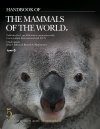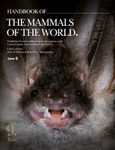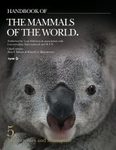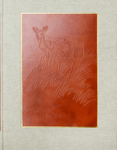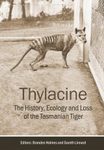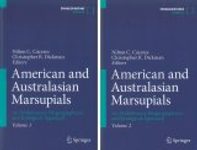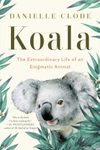World / Checklist Flora / Fauna
By: Don E Wilson(Editor), Russell A Mittermeier(Editor), Toni Llobet François(Illustrator)
799 pages, 44 plates with colour illustrations; 717 colour photos, 375 colour distribution maps
![Handbook of the Mammals of the World, Volume 5: Monotremes and Marsupials Handbook of the Mammals of the World, Volume 5: Monotremes and Marsupials]()
Click to have a closer look
About this book
Contents
Customer reviews
Related titles
About this book
Platypus, Echidnas, Opossums, Kangaroos, Koalas, Wallabies, and Wombats – Monotremes and Marsupials include a host of animals that have intrigued mammal fanciers for centuries. Monotremes are a very distinctive ancient group of mammals with only a handful of extant species in Australia and New Guinea, and Marsupials, with roots in South America, likely reached Australia via Antarctica some 50 million years ago. With relatives remaining in America, Marsupials have adapted to an amazing diversity of lifestyles and habitats. Volume 5 of HMW provides complete coverage of these two important groups of mammals. Lavishly illustrated with color photographs showing different behaviors of all of them, the text contains the latest up-to-date information on all families of Monotremes and Marsupials, both Australasian and American.
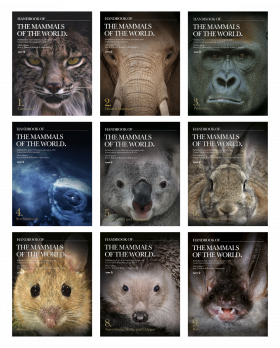
Volumes 1-9 can also be bought together.
Contents
Introduction
Special Chapter on Extinct Marsupials, by Kristofer Helgen.
Family Tachyglossidae (Echidnas) Stewart Nicol
Family Ornithorhynchidae (Platypus) Tom Grant
Family Didelphidae (Opossums) Diego Astúa
Family Caenolestidae (Shrew Opossums) Bruce Patterson
Family Microbiotheriidae (Monito del Monte) Eduardo Palma & Alejandro Valladares
Family Notoryctidae (Marsupial Moles) Ken Aplin
Family Myrmecobiidae (Numbat) Tony Friend
Family Dasyuridae (Carnivorous Marsupials) Andrew Baker
Family Thylacomyidae (Bilby) Rick Southgate
Family Peramelidae (Bandicoots) Christopher Dickman
Family Phascolarctidae (Koala) Stephen Jackson
Family Vombatidae (Wombats) Rod Wells
Family Burramyidae (Pygmy Possums) Stephen Jackson
Family Phalangeridae (Cuscuses, Brush-tailed Possums and relatives) Kristofer Helgen & Stephen Jackson
Family Pseudocheiridae (Ring-tailed Possums and Greater Gliders) Stephen Jackson
Family Petauridae (Striped Possums, Leadbeater's Possum and Lesser Gliders) Stephen Jackson
Family Tarsipedidae (Honey Possum) Ronald Wooller
Family Acrobatidae (Feather-tailed Gliders and Feather-tailed Possum) Ken Aplin
Family Hypsiprymnodontidae (Musky Rat Kangaroo) Andrew Dennis
Family Potoroidae (Bettongs and Potoroos) Mark Eldridge & Greta Frankham
Family Macropodidae (Kangaroos and Wallabies) Mark Eldridge & Graeme Coulson
Customer Reviews (1)
-
Essential reference to monotremes and marsupials
By
Gehan de Silva Wijeyeratne
14 Aug 2020
Written for Hardback
As with the preceding titles in the series, the fifth volume in the Handbook of the Mammals of the World (HMW) is inspiring for the depth and breadth of scholarship. But this particular volume can also leave you upset and angry. In a departure from the other volumes, it includes recently extinct species and has an opening essay which is a pretty horrific account of how once widespread mammals became extinct very rapidly in just a couple of centuries through human activity in Australia. It is hard to imagine that remarkable marsupial carnivores like the Thylacine are now extinct because they were a threat to livestock farming. HMW 5 opens with an essay ‘Recently Extinct Australian Marsupials and Monotremes’ by Kristofer M. Helgen and Elizabeth G. Veatch (pages 17-25). It is a depressing read that only a century or two ago, modern humans could have been so thoughtless, unable to understand their impacts and not have set aside land early enough to conserve some of the special fauna of Australia. We read about the Toolache Wallaby; ‘probably the most beautiful and elegant of all the wallabies’. It was widespread in south-eastern Australia but changes in land use and unsustainable hunting led to its extinction. But hang on a minute, are we any better today? As I write this in August 2020, the British conservation press carries stories of Hen Harriers and other birds of prey shot on grouse moors. In France, the Minister of Ecological Transition, has presented a draft decree that would allow the killing of 18,000 European Turtle Doves this Autumn; allegedly half the population. This is a bird that is globally red-listed and in Britain the population had plummeted to 10 per cent of what it was fifty years ago. There is a parallel between what is happening today with both birds and mammals in the UK and the extinction of mammals in Australia which HMW 5 opens with.
Mammals are classified into three subclasses, Prototheria, Metatheria and Theria (or placental mammals). The subclass Prototheria contains a single order, the Monotremata which has two families, the family Tachglossidae with three species of echidnas and the family Ornithorhynchidae with a single species of platypus. The monotremes are restricted to Australia and New Guinea. The monotremes are quite special and ancient and likely to have split early from reptiles. They are the only mammals to lay eggs. The subclass Metatheria comprises several orders of marsupial mammals which are found in the Americas and the Australasian region which includes New Guinea and adjoining islands. The marsupials have pouches within which they carry and suckle their young. In the Americas, the marsupials have their centre in South America although some marsupials such as the opossums extend their range to Canada in North America. The prototherians with the single order of monotremes and the metatherians with seven orders of marsupials are covered in this book. The marsupials include four orders which have a single family each. These are the Opossums, Shrew-opossums, Monito del Monti and Marsupial Moles. Two of the orders have two families each. One order, the Diprodontia have eleven families which include the familiar Kangaroos and Wallabies (family Macropodidae).
This single volume covers two of the three subclasses of mammals, the Prototheria and the Metatheria whilst the other eight of the nine-volume series covers placental mammals or those in the subclass Theria to which humans and most mammals we are familiar with belong. I have lived most of my life in Europe and South Asia where both monotremes and marsupials are absent. When I spent a month in Sydney one of the things I did was to visit the superb Taronga Zoo which I knew offered me the best chance to see many of these secretive mammals, most of which are nocturnal. Some marsupials such as the Shrew-opossums (order Paucituberculata) are confined to high elevations of the Andes. South America also has the Monito del Monte a nocturnal and secretive species with an order to itself (Microbiotheriidae). It is a sad reality that for most people, a book such as this may be the only way to become acquainted with the wonderful diversity of mammals. Some species, sometimes entire orders of mammals, may be just too difficult to see in person in the wild or even in a Zoo.
The volume follows the standard format for the series. A few preliminaries are followed by expansive family introductions which are grouped under standard categories including Systematics, Morphological Aspects, Habitat, General Habits, Communication, Food and Feeding, Breeding, Movements, Home Range and Social Organisation, Relationships with Humans and finally Status and Conservation. These sections are interspersed with stunning images of a generous size afforded by the larger encyclopaedia size of the pages. Some images occupy a full page combining a coffee-table presentational format to a book underpinned by solid science.
The family sections begin with a useful fact box and a map showing the global distribution of the family. The systematics section often uses a diagram to explain the composition of subfamilies with a discussion on the latest classification based on molecular phylogenetics. The family chapters finish with plates and species accounts. In the species accounts the text is more telegraphic in style and intended to be for reference. The expansive family accounts on the other hand, although packed with solid science are a pleasurable read. There is something interesting and exciting to learn in every paragraph. I just wish sections of pages could be detached for a read on the train. As with all of the volumes each book is a remarkable team collaboration with an editorial team and authors. Twenty authors have contributed to this volume with the plates illustrated by Toni Llobet. The image selection is stunning and some of the mammals look like they have been imagined by a cartoonist for a Walt Disney film. In the end sections is a list of the references of scientific descriptions (pages 739-741) followed by a comprehensive list of general references (pages 742-784).
Although at the start of the review, I dwelt on extinctions, the book also offers glimmers of hope that all is not lost. New mammals will continue to be described to science in South America which still has large areas of forest to be properly explored by zoologists. However, it is more exciting to learn that new mammals continue to be discovered even in Australia; an example being the Black-tailed Antechinus from Eastern Australia.
The fifth volume of the Handbook of the Mammals of the World on Monotremes and Marsupials is a fascinating volume to several orders of little known mammals which only a handful of serious mammal enthusiasts will be aware of. HMW 5 brings together expert authorship, stunning images and a functional layout to be both a reference volume and a pleasurable read.
2 of 2 found this helpful
-
Was this helpful to you? Yes No
World / Checklist Flora / Fauna
By: Don E Wilson(Editor), Russell A Mittermeier(Editor), Toni Llobet François(Illustrator)
799 pages, 44 plates with colour illustrations; 717 colour photos, 375 colour distribution maps







